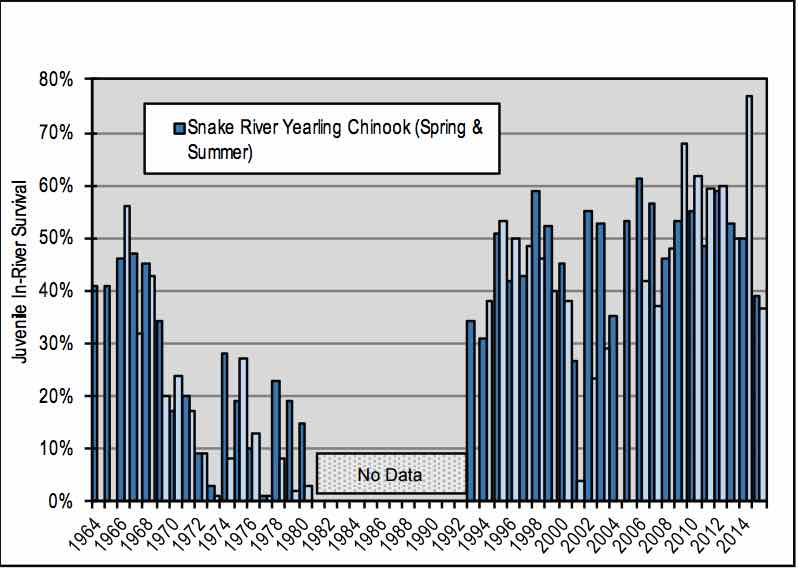forum
library
tutorial
contact

Removing Snake River Dams is Unwise
by Don C. BrunellThe Courier Herald, February 16, 2021
|
the film forum library tutorial contact |

|
Removing Snake River Dams is Unwiseby Don C. BrunellThe Courier Herald, February 16, 2021 |
From fish to electrical power, removing the dams could be disastrous to Washington.
Idaho Congressman Mike Simpson's $33 billion plan to remove the lower Snake River dams is unwise. However, if he pushes it, he needs include the impact of breaching dams in his home state which completely shutoff salmon and steelhead migration.
Simpson, a Republican representing eastern Idaho, announced he wants to rupture the four lower Snake River dams--Ice Harbor, Little Goose, Lower Monumental and Lower Granite--all in southeast Washington. Those impoundments have fish passage systems to allow adult anadromous fish to continue upstream to spawn and divert young salmon from power turbines allowing them to swim to the ocean.
Interestingly, Simpson's proposal does not include dam removal in his home state--projects constructed without fish ladders.
Missing are three Snake River dams in Hells Canyon--North America's deepest river gorge (7,993 ft.). The dams are owned by Idaho Power Co. and in a normal year, they generate 70 percent of the company's hydropower.
Simpson's breaching plan also does not include the 717 ft. tall Dworshak Dam, the nation's third highest which was completed in 1972. It is operated by the Corp of Engineers primarily for flood control. It blocks the north fork of the Clearwater River—a main tributary of the Snake. Its reservoir extends 54 miles into the remote Bitterroot Mountains cutting off access to wilderness spawning grounds.
While most salmon runs have struggled over the last 30 years, northwest electric ratepayers paid $7.6 billion to the Bonneville Power Administration (BPA) for fish and wildlife protection.
According to Northwest Rivers Partners (NRP): "As a result of these investments, juvenile salmon production and survival has improved greatly, and fish passage for both adults and juveniles is excellent at many of the projects. Carefully engineered fish ladders and turbine bypass systems, such as fish screens and slides called spillway weirs, help juvenile salmon survive at a rate of between 93 and 99 percent past each dam."
 "Survival through the Snake River dams for young salmon averages 97 percent. It is even better for juvenile steelhead at 99.5," NRP adds.
"Survival through the Snake River dams for young salmon averages 97 percent. It is even better for juvenile steelhead at 99.5," NRP adds.
The bigger problem is young fish swimming downstream to the ocean are intercepted by hordes of natural predators such as Cormorants.
Salmon maturing in the ocean must dodge the engulfing nets from fleets of giant trawlers, many of which are foreign. The small percentage of mature salmon which return to the Columbia and Snake also must run the gauntlet of seals, sea lions, gillnets and fishing lines.
While breaching proponents tend to diminish the importance of the four Snake River dams power production, they can provide enough electricity for 1.87 million homes when generating at full capacity. On average, they contribute five percent of the Northwest's electricity supply—power absent of CO2.
The dams' network is the marine highway created on the Columbia and Snake rivers. It is the most environmentally friendly way to move cargo from Lewiston to Astoria. A tug pushing a barge can haul a ton of wheat 576 miles on a single gallon of fuel. For comparison, if the dams were breached in 2017, it would have taken 35,140 rail cars or 135,000 semi-trucks to move the cargo that was barged on the Snake River that year.
Ten percent of all Northwest exports pass through the four lower Snake River dams. They generate $20 billion in trade, commerce and recreation income. Water from their reservoirs nourishes thousands of farms, orchards and vineyards.
(bluefish notes: Brunell must be referring to ten percent of all WHEAT exports from the Northwest, in making the above statement. Oregon alone is exporting $24 billion annually and only 2.5 million tons of wheat are shipped through the lower Snake River dams.)The Columbia/Snake river system is important to the entire northwest. Sweeping changes must be very carefully considered and completely examined. While Simpson's plan may sound inviting, it is far more complex and may prove devastating to our region
We can't take that chance. That's why it is unwise.
Related Pages:
Public Comment and Federal Responses, 45-day comment period of 8,000 page CRSO EIS, by bluefish during the Covid-19 Lockdown, 2020.
learn more on topics covered in the film
see the video
read the script
learn the songs
discussion forum
